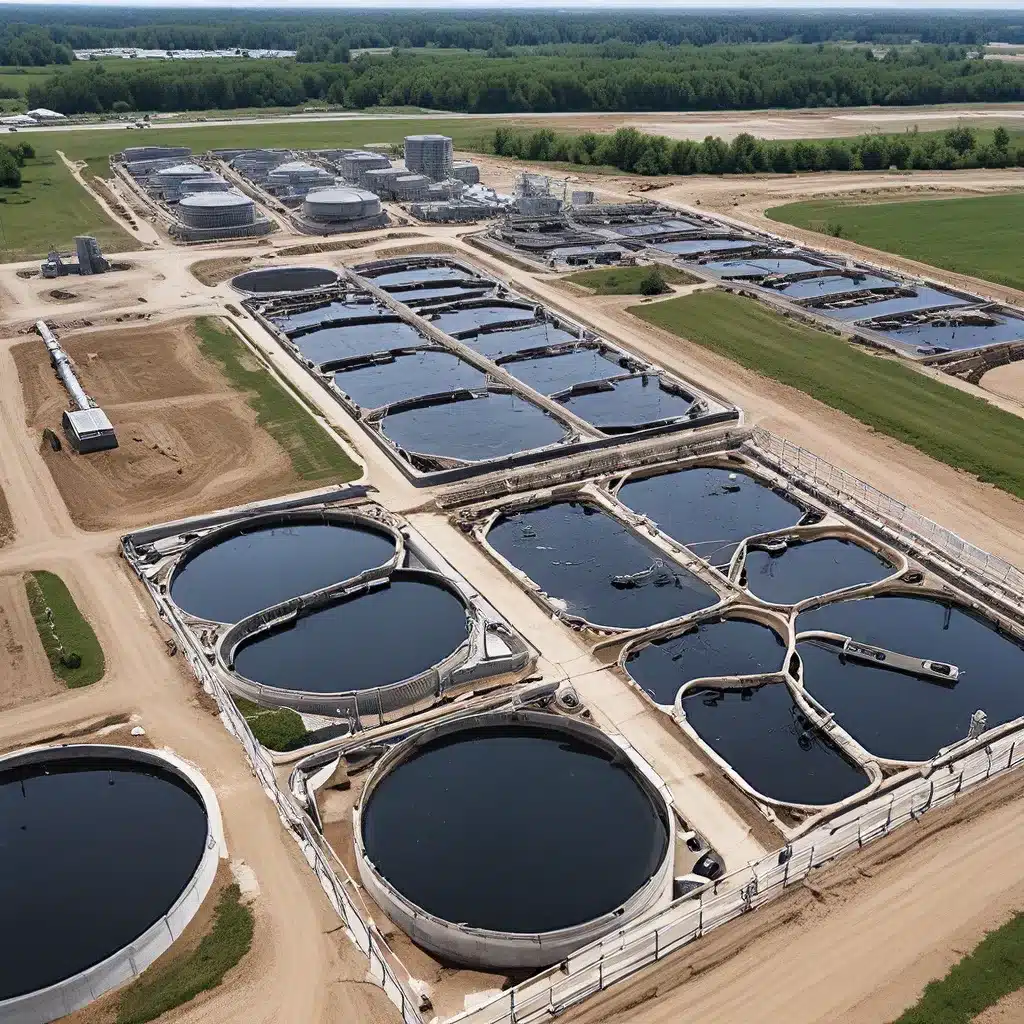
The Wastewater Conundrum: Transforming a Necessary Evil into a Sustainable Solution
As I stared out the window of my office, overlooking the bustling wastewater treatment plant, I couldn’t help but ponder the irony of it all. Here was a facility tasked with the vital job of cleaning our water, yet it was often seen as an environmental villain – energy-guzzling, chemical-dependent, and a contributor to greenhouse gas emissions. But what if I told you that a revolution was brewing, one that could transform wastewater treatment into a shining example of sustainability and environmental stewardship?
You see, the more I delved into this topic, the more I realized that the wastewater industry was undergoing a remarkable shift, driven by the principles of Environmental, Social, and Governance (ESG). Companies like Inland Waters Inc. are leading the charge, exploring innovative ways to harness the potential of waste materials and create a more sustainable future.
Waste Not, Want Not: Turning Wastewater into Renewable Resources
One of the primary environmental challenges faced by traditional wastewater treatment is its substantial carbon footprint. Conventional methods often involve the extensive use of energy and chemicals, contributing to greenhouse gas emissions and exacerbating climate change. But what if I told you that there’s a solution hiding in plain sight?
Innovative approaches are now leveraging organic waste materials, such as agricultural residues, food waste, and even industrial by-products, to enhance the efficiency of wastewater treatment plants. The integration of these waste materials can serve multiple purposes, from providing alternative energy sources to promoting the growth of beneficial microorganisms that aid in the treatment process.
Imagine a wastewater treatment plant that not only cleans our water but also generates its own clean energy through the biogas produced by anaerobic digestion of organic waste. Or a facility that uses the natural power of algae to absorb nutrients and pollutants, eliminating the need for energy-intensive chemical interventions. These are the kinds of sustainable solutions that are revolutionizing the industry.
Building Bridges, Forging Connections: Wastewater Treatment and the Community
But the story of wastewater treatment sustainability doesn’t just stop at environmental impact. It also has a deep social component that often goes overlooked. You see, these sustainable practices aren’t just good for the planet – they’re also good for the communities in which they operate.
By incorporating waste materials from local sources, wastewater treatment plants can create a closed-loop system that benefits the surrounding area. Imagine a partnership with local farmers, where the plant sources agricultural residues to enhance its treatment process. Not only does this reduce the need for external inputs, but it also strengthens the bond between the facility and the community, fostering a sense of shared responsibility and environmental stewardship.
Moreover, the adoption of more sustainable practices can have a positive impact on the health and well-being of nearby residents. Traditional treatment methods often involve the use of chemicals that may pose health risks if not managed properly. By transitioning to organic waste-based solutions, wastewater treatment plants can minimize the potential negative impacts on the local community, truly embodying the spirit of social responsibility.
Governance: The Keystone of Sustainable Wastewater Management
But the sustainability journey doesn’t end there. The governance pillar of ESG also plays a crucial role in ensuring the long-term success of these initiatives. Effective resource management, adherence to regulations, and transparency in operations are all essential components of a well-run wastewater treatment facility.
By integrating waste materials into the treatment process, companies are showcasing their commitment to efficient resource management. Rather than viewing waste as a burden, they’re transforming it into a valuable resource that can enhance the overall efficiency of the system. This approach not only reduces the need for external inputs but also contributes to cost savings, aligning with the governance objectives of optimizing operations for long-term sustainability.
Furthermore, the use of waste materials in wastewater treatment can aid in regulatory compliance. As environmental regulations become increasingly stringent, companies that proactively adopt innovative approaches position themselves as leaders in the field, contributing to the broader goal of environmental protection.
Beyond the Horizon: Challenges and the Path Forward
Of course, the journey towards sustainable wastewater treatment is not without its challenges. Scaling up innovative technologies from pilot projects to full-scale implementation, navigating the economic viability of these approaches, and staying ahead of evolving regulatory frameworks – these are just a few of the hurdles that companies must overcome.
But the pioneers in this space are proving that the rewards far outweigh the risks. By embracing the principles of ESG, wastewater treatment plants are not only reducing their environmental impact but also fostering stronger connections with their communities and positioning themselves as leaders in sustainable governance.
As I watched the bustling activity at the plant, I couldn’t help but feel a sense of excitement. The future of wastewater treatment is bright, and it’s being forged by those who are willing to challenge the status quo and embrace the power of sustainability. Who knows what other innovative solutions are just around the corner, waiting to be discovered?
One thing is certain – the transformation of wastewater treatment practices is a crucial aspect of our journey towards a more sustainable future. And with companies like Inland Waters Inc. leading the charge, I have no doubt that we’ll see more and more wastewater treatment plants becoming shining examples of environmental stewardship.
Embracing the Wastewater Revolution: A Sustainable Future Awaits
So, what do you say? Are you ready to dive into the world of wastewater sustainability and witness the remarkable transformation unfolding before our eyes? Because trust me, the future is bright, and it’s just waiting for us to embrace it.


